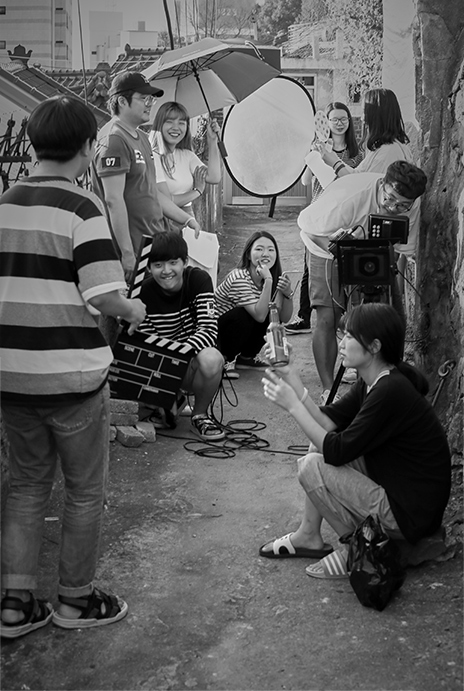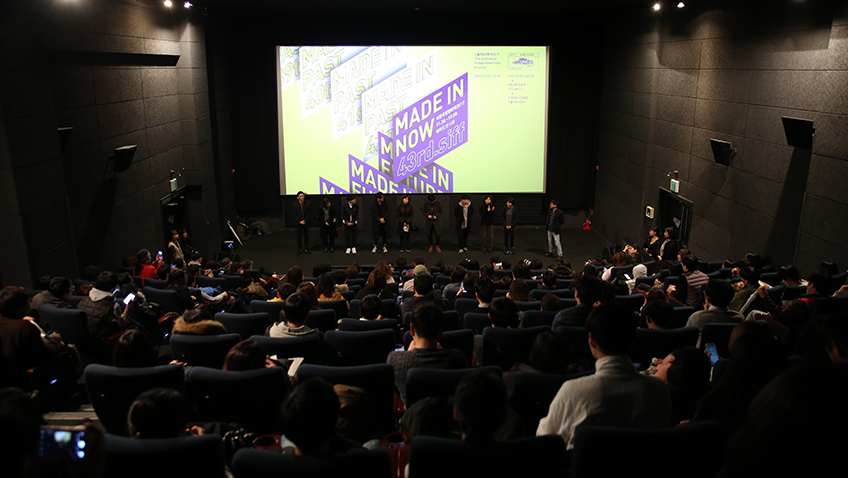
Contents





A Poet Who Sings Love






The Cinema Goes Down to the Street
Independent Film and the Depiction of Modern Korea
Independent films do not simply tell different narratives; they also show us a more diverse world, one that is closer to lived existence. Shooting on location and lacking the budget for special effects, these movies have far greater resonance for residents of the country, although for this reason can often have difficulty traveling abroad. They are also made by younger filmmakers with more divergent backgrounds, giving a more accurate reflection of the concerns and anxieties of the nation as a whole.
Written by Dr. Marc Raymond, Associate Professor, Department of Media and Communication, Kwangwoon University, Seoul
 © shutterstock
© shutterstockWhat Does the Independent Cinema Show Us?
Arguably no national cinema has undergone as large a transformation in the last two decades as the Korean industry. Once dominated by Hollywood releases, Korean cinema now competes with and often outperforms its American competitors in the domestic market. Since 2004, all of the top ten grossing films have been Korean with the exception of 2009’s “Avatar.” This success has come at a certain price, however, as these bigger movies tend to ignore everyday reality in favor of nationalist fantasy and myth-making, as seen in the huge popularity of the CGI-heavy “Along with the Gods” films of the past year. Even the Blue Dragon Awards, Korea’s Oscar equivalent, is dominated by wide releases with a broad audience appeal, such as last year’s “A Taxi Driver.”
In reaction to this, film critic and scholar Darcy Paquet created the Wildflower Film Awards in 2013 to help independent films gain greater recognition and exposure. Along with the support of government organizations, festivals, and the creation of the CGV Arthouse label, independent films have been able to gain a foothold within the industry and expose viewers to smaller stories that show the quotidian spaces of contemporary life. Indie films do not simply tell different narratives; they also show us a more diverse world, one that is closer to lived existence. Shooting on location and lacking the budget for special effects, these movies have far greater resonance for residents of the country, although for this reason can often have difficulty traveling abroad. They are also made by younger filmmakers with more divergent backgrounds, giving a more accurate reflection of the concerns and anxieties of the nation as a whole.
 “Microhabitat” critically portrays the reality of people who can’t buy a house and have to drift. © M-Line Distribution
“Microhabitat” critically portrays the reality of people who can’t buy a house and have to drift. © M-Line DistributionAs opposed to blockbusters, which usually consist of either large scale geo-politics, historical trauma, or a nostalgia for Korea’s mythical past, indie films show the people and spaces the larger productions ignore. In particular, younger viewers rarely see their lives portrayed with any accuracy on screen, and any dilemmas they do have are often purely romantic. In contrast, a movie like this year’s indie “Mate,” which is solidly within the romantic comedy genre, revolves around problems of work and status as much as love, and shows the cramped apartments, work spaces, bars, and convenience stores where modern youth spend much of their time. Films like “Microhabitat,” a modest art cinema success from earlier in the year, go further in being about the problems of housing itself, all within the context of an entertaining comedy-drama about a group of former friends who are growing apart with age.
Most obviously, independent films can show us members of marginalized groups, telling not only their struggles but visually representing their specific locations, showing that these people do exist despite their lack of overall media presence. One important recent example of this is 2017’s “Jane,” which combines a story of runaway youth with a portrayal of a transgender woman. It is shot on location within the LGBT area of Itaewon in downtown Seoul, an alternative space usually ignored and forgotten. The capturing of the sense of community amongst these marginalized groups, including homosexuals, women, and racial minorities, is a much greater part of indie film and one of the reasons why it needs to be supported.
 The shooting of a scene from “Spiral of Silence,” an independent film that reflects the reality facing many young people today. © ANTFILM
The shooting of a scene from “Spiral of Silence,” an independent film that reflects the reality facing many young people today. © ANTFILM An example of location shooting in an alleyway. Independent films aim at depicting the everyday reality of the world without exaggeration. © ANTFILM
An example of location shooting in an alleyway. Independent films aim at depicting the everyday reality of the world without exaggeration. © ANTFILMBest Korean Independent Film
“Han Gong-ju”
The last five years have seen a large number of very fine independent films, and I do not have the space to discuss them all. Thus, I wanted to focus on my favorite, “Han Gong-ju,” the winner of the Wildflower Award Grand Prize in 2014. I believe this is the best Korean indie for a few reasons, but ultimately because it is one of the most emotional experiences that I can remember having with any movie. Fair warning, this is not an easy film to watch at times, as there are depictions of sexual assault against teenage girls that are truly horrifying. But the scenes are not needlessly graphic or gratuitous and are so disturbing because of the intense connection the viewer feels towards the title character.
 One scene from “Han Gong-ju.” The main character is alone even when she is surrounded by her friends. © Vill LEE Film
One scene from “Han Gong-ju.” The main character is alone even when she is surrounded by her friends. © Vill LEE FilmThe story revolves around this incident of sexual violence and can be seen as an early precursor to the rise of the #metoo movement in Korea in the past year. The guilt is not only with the teenage perpetuators but with a society that feels more comfortable denying rather than acknowledging these realities. But the greatness of the movie goes beyond its detailing of these social horrors. What remains in the mind is the relationships between the characters, especially Gong-ju’s connection with her female schoolmates as an alternative to the ugliness of the rest of the world. Writer-director Lee Su-jin tells the story obliquely, moving around in time and eschewing a linear approach, and while some may find this distracting, I think it is crucial to the visceral impact of the conclusion, one of the most haunting yet also hopeful I can recall.
 The main character of “Our Body” learns the real beauty and value in herself. © M-Line Distribution
The main character of “Our Body” learns the real beauty and value in herself. © M-Line DistributionThe Seoul Independent Film Festival
Most Korean independent films have their premiere at either the Jeonju International Film Festival (JIFF) in May or the Busan International Film Festival (BIFF) in October. However, both festivals have disadvantages. If you live in the Seoul area, it can be difficult to travel during these times, and tickets can be hard to obtain. A second problem is that these festivals have a large number of films, and the majority are not really worth the time of the average viewer. The Seoul Independent Film Festival (SIFF) solves both of these problems. Taking place at the end of the year (2018’s festival runs from Nov. 29th to Dec. 7th), it selects from the large number of films that premiered at the earlier festivals and puts together a program of the best and most critically acclaimed of these works. In addition to fiction features, there are a large number of documentaries and shorts as well.
Among the highlights of this year’s upcoming program would be Han Ka-ram’s “Our Body” and Kim Bo-ra’s “House of Hummingbird,” two of the better entries from the 2018 Busan festival, and both first features from women telling stories about the Korean female experience. “Our Body” was produced by the Korean Academy of Film Arts (KAFA), which often cultivates the finest indies of the year, and revolves around a female lead character in her late 20s who starts to question both her career track as well as her own sexuality. “House of Hummingbird” is more ambitious, taking place in 1994 Seoul and centering on a 14-year-old girl trying to come of age in chaotic personal and social circumstances. The scope of this period film shows that even on a smaller scale, indies are aspirational in their desire to take the camera into the street and capture human experience.
Information on SIFF can be found at www.siff.or.kr/e/
 The producer team of the movie “Cinema with You” having a conversation with the audience at the CGV Apgujeong in December 2017. © Seoul Independent Film Festival
The producer team of the movie “Cinema with You” having a conversation with the audience at the CGV Apgujeong in December 2017. © Seoul Independent Film FestivalOther Articles





A Poet Who Sings Love





Application of subscription
Sign upReaders’ Comments
GoThe event winners
Go


 December 2018
December 2018


